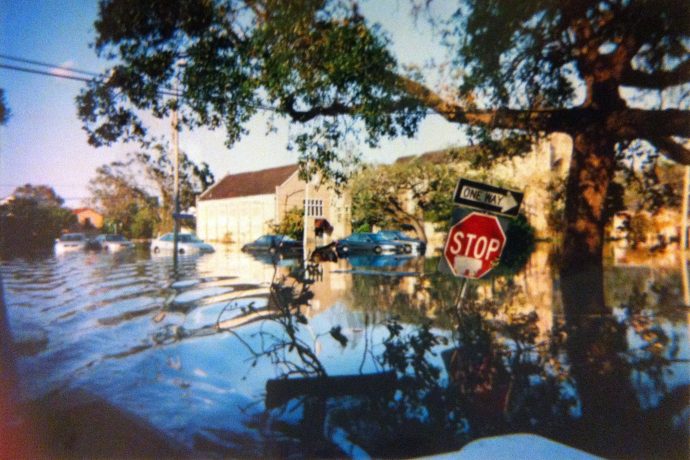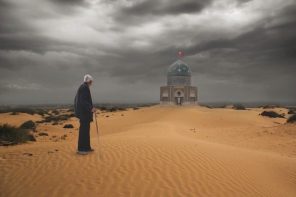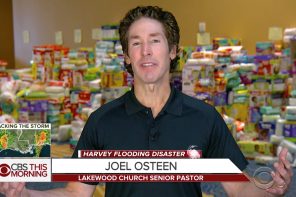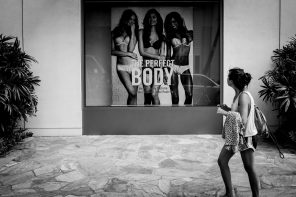What inspired you to write In Case of Katrina: Reinventing the Church in Post-Katrina New Orleans?
Although I teach at a seminary in Tulsa, I was ordained in Louisiana and my conference membership is still there. Soon after the floodwalls broke, it became clear that there were seventy United Methodist (UMC) churches in Louisiana that couldn’t reopen then. Ninety UMC pastors were displaced because the members of their churches were not able to return home, and the congregations couldn’t pay salaries and benefits for their ministers. Our connectional structure means that the larger church had a responsibility to these people.
Unlike other mainline Protestant churches in New Orleans, the UMC has a lot of racial diversity. About half the affected congregations were African American, and Latino, Korean and Native American churches were also impacted. The complexity of the situation was unprecedented and quite daunting. It was inevitable that the decision-making process about how to proceed and where to put resources was going to be difficult and fascinating. I started collecting material about it the first week.

In Case of Katrina: Reinventing the Church in Post-Katrina New Orleans
Ellen Blue
Wipf & Stock
August 4, 2016
My heart was breaking, too, since New Orleans is my home. My son was in the city as a first responder during the storm, and his family’s home had to be bulldozed. The fear and grief were very personal for me. Yet living and teaching in Tulsa gave me the distance that allowed some level of objectivity that UMC people living in south Louisiana couldn’t hope to achieve. It was clear this book need to be written, and that I was in the perfect position to write it.
What’s the most important take-home message for readers?
One important takeaway is questioning the idea that disasters are “acts of God” that humans can’t prevent. Humans could have prevented much of the flooding and its aftermath, and there are things we could be doing right now to limit the peril all our coastal cities are in as sea levels rise.
While it’s true that we can’t control the weather, we have been changing the climate (though not everyone admits that, even today, especially in oil-producing states). We’ve also been letting coastal areas erode, including barrier islands that protect settled areas, even though we have a lot of knowledge about how to prevent that. And when that happens, floods will happen, too.
Our responsibilities toward the Earth and toward one another are so much broader than stepping in to clean up messes and acting surprised that the messes occurred.
Is there anything you had to leave out?
Oh, yes, there are so many stories that are missing. Early on in the book, I explain the process by which I decided that I would have to limit the project geographically to the city of New Orleans. And even within the city, some congregations are barely mentioned, and some deeply involved pastors are absent from the narrative. That doesn’t mean their stories aren’t important. But I have an office full of material that just didn’t fit into one volume.
What are some of the biggest misconceptions about your topic?
The first is that the only thing that matters after a catastrophic event is what we call “disaster response”—helping people restore their lives to the way they were before. That involves meeting immediate needs for food, water, safe shelter, medical care, and in the case of Katrina, locating members of families who were taken to different locations. Then, the ridiculously long process of working through insurance claims and dealing with government agencies that offer help in rebuilding has to be navigated. The UMC is really good at case management, at staying with people through that journey. But it’s not controversial for the church to be involved in that kind of ministry.
What interested me was the process the church would use to decide how it should make the decisions about which churches could reopen, which had to merge, which would be closed, and how resources should be allocated. Would we achieve some semblance of justice in that very controversial work?
Did you have a specific audience in mind when writing?
Not precisely. I was driven more by the idea that the story needed to be told than I was by who would be hearing it. I’m sure it would be a wonderful addition to the reading list for a lot of courses, but my hope is that clergy at all levels of church leadership will read it and gain some ideas about leadership, not just in crisis, but also in our everyday life together in church.
Are you hoping to just inform readers? Entertain them? Piss them off?
Disasters like this (though maybe not at this scale) are inevitable, and I want to share what we learned in Louisiana. The unusual approach our bishop and provost took had good results overall, and that’s worth celebrating. However, there will be a certain level at which the book will annoy people, too. I’ve pointed to the church’s responsibility to deal with issues of justice and with coastal erosion and climate change. None of those ideas is popular with everyone. I hope the book will inspire leaders to speak prophetically about important issues.
What alternative title would you give the book?
I’m terrible at titles. I’m thrilled I thought up even one that worked. As an alternative, I’d play with the word “sanctuary” and see if I could come up with something that framed the dilemma of balancing the people’s need for safety and comfort with the need to take advantage of the opportunity to do ministry in completely different ways.
How do you feel about the cover?
This was an emotionally costly project for me. I’ve said that it stretched out just like storm recovery did, and there were times when I thought I’d never finish. Working to put together the closing chapters, “What’s God Got to Do with It,” and “It’s Time,” both of which described a prophetic stance that the church needs to take, required a forward motion in my own spirit toward a hopeful future. The cover photo looked bleak to me at first, and I thought it emphasized the losses rather than the solutions that have been developed. But other people saw the beauty and peace of the photo, and I began to see it, too. Now, I really love it.
Is there a book out there you wish you had written? Which one? Why?
I love biography. In my twenties and thirties, I freelanced for magazines, and I loved doing profiles of people. Anytime I see a biography of a person I admire, I’m a little jealous that I didn’t get to delve into the subject’s life and record what I found.
What’s your next book?
I think I’ll try a book about my own evolution from a girl who was born into a thoroughly racist family and community and who absorbed that fear and hatred uncritically into an adult who works toward social justice for all people. We like to think that people can change in fundamental ways, but how we can facilitate that kind of positive transformation isn’t easy to understand or to teach. Maybe my story could shed some light on that.





